Related Research Articles
Events from the year 1934 in Denmark.
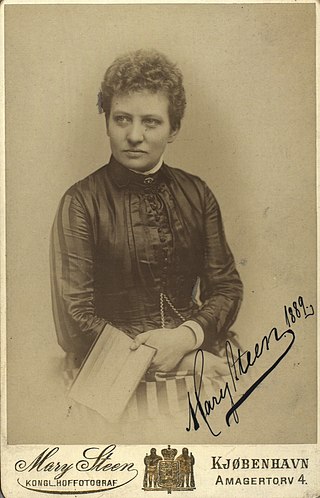
Mary Dorothea Frederica Steen was a Danish photographer and feminist. At the age of 28, she opened a studio in Copenhagen where she specialized in indoor photography. She later became Denmark's first female court photographer, working not only with the Danish royal family but, at the invitation of Princess Alexandra, with the British royal family too. She also played an important part in improving conditions for female workers and encouraging women to take up the profession of photography.
Events from the year 1840 in Denmark.

Marie Sørine Louise Nørlund (1854–1919) was a Danish feminist and pacifist. She was the founder and chairman of the Danske Kvindeforeningers Valgretsforbund or DKV in 1898–1907 and 1908–1909.

Line Luplau (1823–1891) was a Danish feminist and suffragist. She was the co-founder of the Danske Kvindeforeningers Valgretsforbund or DKV and first chairperson in 1889-1891.
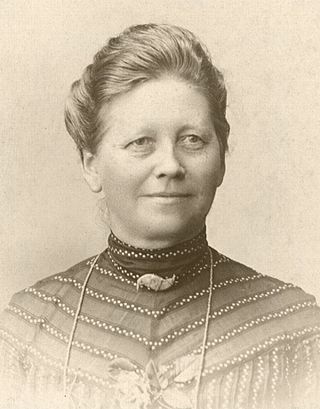
Eline Johanne Frederikke Hansen, was a Danish feminist and peace leader.
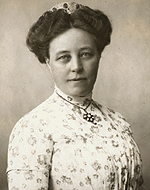
Elna Munch née Sarauw was a Danish feminist and politician,. She was the co-founder of the Landsforbundet for Kvinders Valgret or LKV (1907), the more radical of the two main Danish suffrage movements, and alongside Johanne Rambusch its leading member.

The Danish Women's Society or DWS is Denmark's oldest women's rights organization. It was founded in 1871 by activist Matilde Bajer and her husband Fredrik Bajer; Fredrik was a Member of Parliament and the 1908 Nobel Peace Prize laureate. The association stands for an inclusive, intersectional and progressive liberal feminism, and advocates for the rights of all women and girls and LGBT rights. It publishes the world's oldest women's magazine, Kvinden & Samfundet, established in 1885. The Danish Women's Society is a member of the International Alliance of Women and is a sister association of the Norwegian Association for Women's Rights and the Icelandic Women's Rights Association.

The modern-day character and the historical status of women in Denmark has been influenced by their own involvement in women's movements and political participation in the history of Denmark. Their mark can be seen in the fields of politics, women's suffrage, and literature, among others.

Astrid Stampe Feddersen, usually known as Astrid Stampe, (1852–1930) was a Danish women's rights activist and author alongside her sister Rigmor Stampe Bendix. Stampe joined the women's movement early on and from 1883 to 1887, she was on the board of the Danish Women's Society, playing an active part in work on women's issues.

Nielsine Nielsen was the first female academic and physician in Denmark. She graduated in 1885 and in 1889 she established her own medical practice and worked as a general practitioner. She was active in the gender equality movement through her work in Danish Women's Society.
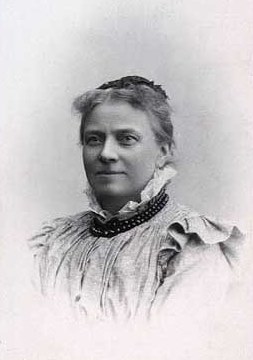
Pauline Matilde Theodora Bajer was a Danish women's rights activist and pacifist.

Tagea Brandt née Rovsing (1847–1882), was a Danish woman. The Tagea Brandt Rejselegat is named in her honor.
Landsforbundet for Kvinders Valgret, or LKV, was a Danish association for women's suffrage, active from 1907 until 1915.

Henriette Marie Antonette Luplau was a Danish artist and educator, active in the women's movement. She conducted an art school for women in Copenhagen with her partner, artist Emilie Mundt.
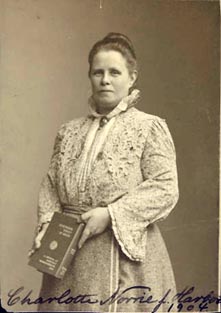
Helga Charlotte Norrie, née Harbou, was a Danish nurse, women's rights activist and educator. She was a major contributor to the development of nursing as an acceptable profession for women and also campaigned for women's rights, especially voting rights.
This is a timeline of women in Denmark, noting important events in Danish women's history.´
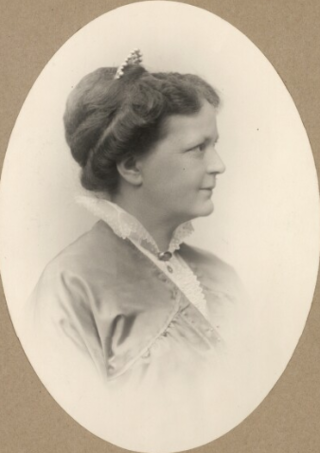
Clara Sophie Tybjerg née Sarauw (1864–1941) was a Danish women's rights activist, pacifist and educator. In 1915, she attended the International Women's Conference in The Hague, together with Thora Daugaard. Thereafter she helped establish and, from 1916 to 1920, headed the Danske Kvinders Fredskæde or Danish Women's Peace Chain which became the Danish branch of the Women's International League for Peace and Freedom. She is also remembered for helping to bring hunger-stricken children from Vienna to Denmark after the First World War.
Benny Sophie Caroline Andrea Cederfeld de Simonsen née Treschow (1865–1952) was a Danish peace activist. She is remembered as an effective member of Danske Kvinders Fredskæde, the Danish branch of the Women's International League for Peace and Freedom (WILPF), later known as Kvindernes Internationale Liga for Fred og Frihed (KILFF). From 1931 to 1939, she was the organization's vice-president. She was an active participant at the international WILPF conferences from 1926 to 1937 as well as a member of their international committee where she dealt with the rights of minorities.
The Kvindelig Fremskridtsforening (KF), or Women's Progress Association, was a Danish women's association which was founded in 1885 by Matilde Bajer and Elisabeth Ouchterlony. They had both been co-founders of the Danish Women's Society in 1871 but now wanted an organization which included specific attention to women's suffrage in municipal and national elections, an issue which was not on the agenda of the apolitical Women's Society. The organization also addressed women's involvement as peace activists and as members of the workforce.